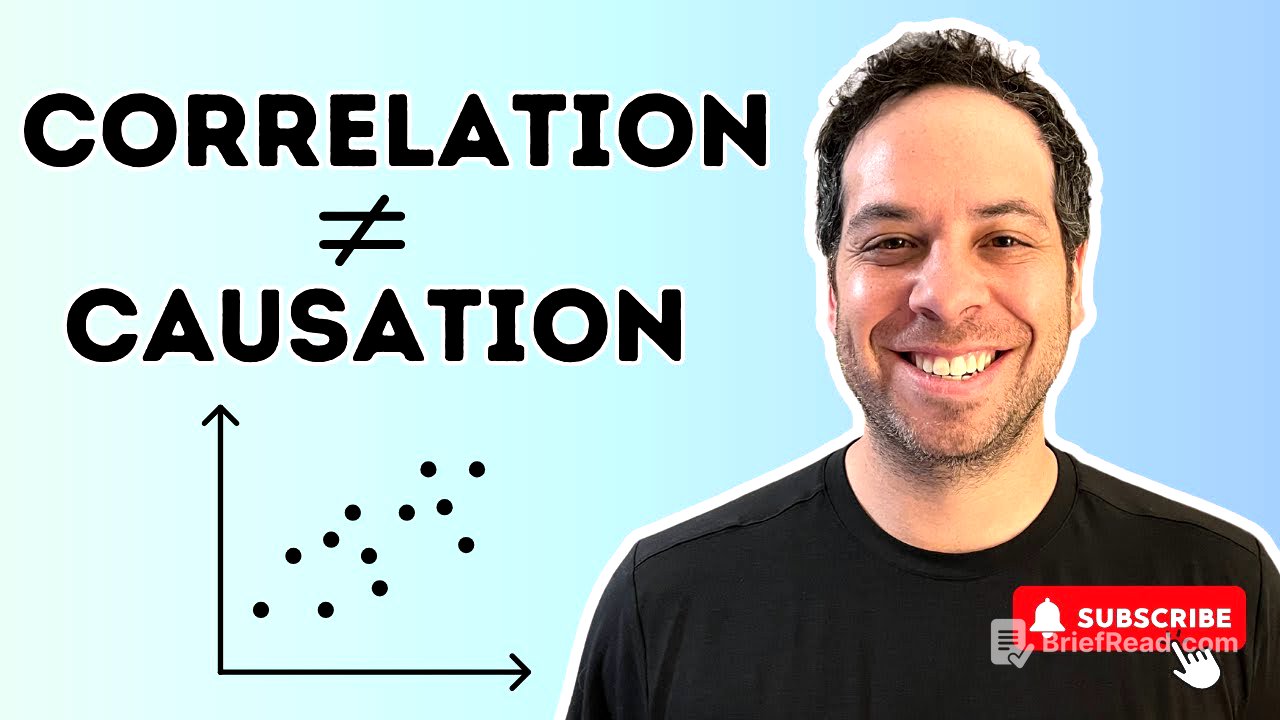TLDR;
This video explains why correlation does not imply causation, a fundamental concept in psychology. It covers four key reasons why we can't assume that one thing causes another just because they are related: the post hoc fallacy (assuming causation based on timing), the directionality problem (not knowing which variable influences the other), the third variable problem (a hidden variable affecting both), and confirmation bias (seeing patterns that confirm pre-existing beliefs). The video uses relatable examples to illustrate each concept and emphasizes the importance of critical thinking when interpreting relationships between variables.
- Correlation does not equal causation.
- Post hoc fallacy: Assuming A causes B simply because A happened before B.
- Directionality problem: Unclear which variable is influencing the other.
- Third variable problem: A hidden variable is affecting both observed variables.
- Confirmation bias: Seeing patterns that confirm pre-existing beliefs, leading to illusory correlations.
Introduction [0:00]
The video introduces the concept that correlation does not imply causation, highlighting how our brains tend to seek patterns and connections, often leading to the assumption that one thing causes another. The presenter uses the example of wearing a crystal necklace and experiencing better sleep to illustrate how we might mistakenly attribute cause and effect without proper evidence or a control group. The video aims to explain why we cannot establish causality from a correlation, even when two things appear to be related.
"Correlation does not imply causation" [0:25]
The presenter emphasizes that observing a relationship between two variables does not automatically mean one causes the other. The video will explore four key reasons why we cannot definitively establish causation from correlation alone. This sets the stage for a deeper examination of potential pitfalls in interpreting relationships between variables.
Post hoc fallacy [1:26]
The post hoc fallacy, or "after this, therefore because of this," is explained as the assumption that because event A occurred before event B, A must have caused B. Examples include sports superstitions, like wearing the same socks for every game, and the misconception linking vaccines to autism due to the timing of vaccinations and autism diagnoses. The presenter clarifies that correlation does not equal causation.
Directionality problem (reverse causality) [3:01]
The directionality problem arises when two variables are related, but it's unclear which one is influencing the other. For example, poor sleep is related to stress, but it's uncertain whether poor sleep causes stress or stress causes poor sleep. Similarly, exercise and happiness are linked, but it's unclear if exercise leads to happiness or if being happy makes one more likely to exercise. Without knowing the direction of influence, causality cannot be established.
Third variable problem (spurious correlation) [3:55]
The third variable problem, also known as a confounding or lurking variable, occurs when an unforeseen factor connects two seemingly related variables. The example of ice cream sales and shark attacks is used to illustrate this point; both increase during summer heat waves, making it appear as though there's a relationship between them when, in reality, a third variable (summer) is responsible for both. Another example is family dinners being correlated with students doing well in school, where the third variable is general parenting style.
Confirmation bias/Illusory correlation [5:57]
Confirmation bias, the tendency to seek out information that confirms pre-existing beliefs, can lead to the perception of causation where only correlation exists. The presenter uses the example of a doctor believing that a full moon causes chaos in the hospital, when in reality, the hospital might be equally chaotic during other phases of the moon. This leads to illusory correlations, where we see relationships between things when there is none, such as full moons and chaos, vaccines and autism, or sugar and hyperactivity.
Video recap [7:23]
The video recaps the four reasons why correlation does not imply causation: timing issues (post hoc fallacy), uncertainty about the direction of the relationship (directionality problem), the presence of a lurking variable, and the influence of our own biases. These factors can lead us to incorrectly establish causality when two variables are merely related.
